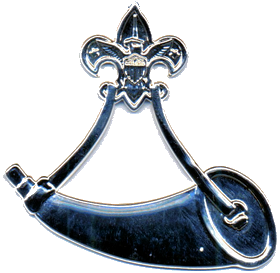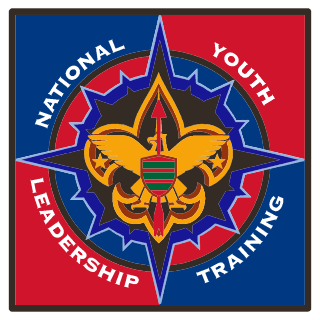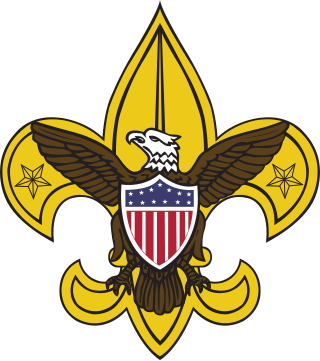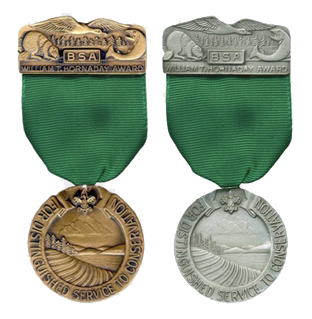
The Boy Scouts of America is one of the largest scouting organizations and one of the largest youth organizations in the United States, with about 762,000 youth participants. The BSA was founded in 1910; about 110 million Americans have participated in its programs. BSA became a founding member organization of the World Organization of the Scout Movement in 1922.

Advancement and recognition in the Boy Scouts of America is a tradition dating from the inception of the Scouting movement. A fundamental purpose of advancement is the self-confidence a young man or woman acquires from his participation in Scouting. Advancement is one of the methods used in the "Aims and Methods of Scouting"– character development, citizenship training and personal fitness.

Cub Scouting is part of the Scouting program of the Boy Scouts of America (BSA), available to boys and girls from kindergarten through fifth grade, or 5 to 10 years of age and their families. Its membership is the largest of the five main BSA divisions. Cub Scouting is part of the worldwide Scouting movement and aims to promote character development, citizenship training, personal fitness, and leadership.

A variety of religious emblems programs are used by the Boy Scouts of America (BSA) to encourage youth to learn about their faith and to recognize adults who provide significant service to youth in a religious environment. These religious programs are created, administered and awarded by the various religious groups, not the BSA, but each program must be recognized by the BSA.

Venturing is a core program of the Boy Scouts of America for young men and women ages 14 through 20. It is one of the Boy Scouts' three programs for older youth, which also include Sea Scouts and Exploring. The purpose of Venturing is to provide a positive environment where youth members, called Venturers, can lead the adventure, take on new leadership roles, and mature into responsible adults.

Sea Scouts is a program of the Boy Scouts of America for young men and women ages 14 through 20.

The Boy Scouts of America (BSA) use uniforms and insignia to give a Scout visibility and create a level of identity within both the unit and the community. The uniform is used to promote equality while showing individual achievement. While all uniforms are similar in basic design, they do vary in color and detail to identify the different membership divisions of Cub Scouting, Scouts BSA and Venturing. Many people collect BSA insignia such as camporee and jamboree emblems, council shoulder strips and historical badges.

Powder Horn is a skills resource course for Venturing and Scouts BSA leaders and youth of the Boy Scouts of America (BSA). Powder Horn is also described as a "hands-on resource management course" designed to give Scouting leaders "the contacts and tools necessary to conduct an awesome high-adventure program" in their Scouting unit. The goals of Powder Horn are to help Scout leaders safely conduct outdoor activities of a fun and challenging nature, provide an introduction to the resources necessary to successfully lead youth through a program of high adventure, and familiarize participants with the skills involved in different high adventure disciplines. The Powder Horn course will also introduce Venturing leaders to the Ranger youth award program, so adults may better help Venturers in meeting the Ranger award requirements. Powder Horn presents a wide variety of hands-on high adventure skills experiences, and thus is not designed to provide specific skills certifications. The course is meant to be held over a one-week period or two three-day weekends. Youth attendees will get first-hand experience and information as well as resources so they can better act as Event Chairs for their units.

National Youth Leadership Training, often called NYLT, is the current youth leadership development training offered by the Boy Scouts of America. The program is conducted at the council level over six days for Scouts, Venturers, and Sea Scouts. The program has been open to all genders since 2010. This training is a part of the national organization's leadership training program and is designed to mirror themes found in Woodbadge, which is the BSA program for adult leadership training.

The Philmont Training Center (PTC), located at the Philmont Scout Ranch near Cimarron, New Mexico, has been the National Training Center of the Boy Scouts of America (BSA) since 1950. The PTC offers week-long training conferences from June through September for council, district, and unit volunteers, BSA professionals, and youth leaders with several conferences taking place each week. The PTC also offers activities for family members including hikes throughout the week and a week-long backpacking program called a Mountain Trek for youth ages 14 to 20.
Introduction to Leadership Skills for Crews is the first level leadership development course for Venturers in the Boy Scouts of America's Venturing program for older youth (14-21). It replaced the Venturing Leadership Skills Course in 2014. While the course is expected to be put on by a crew, many councils/districts put on ILSC courses for their Crews. This is done mainly because many crews are too small to effectively put on the course themselves.

A Scout leader or Scouter generally refers to the trained adult leader of a Scout unit. The terms used vary from country to country, over time, and with the type of unit.

Scouts BSA is the flagship program and membership level of the Boy Scouts of America (BSA) for boys and girls between the ages of typically 11 and 17. It provides youth training in character, citizenship, and mental and personal fitness. Scouts are expected to develop personal religious values, learn the principles of American heritage and government, and acquire skills to become successful adults.

The Boy Scouts of America (BSA) was inspired by and modeled on The Boy Scouts Association, established by Robert Baden-Powell in Britain in 1908. In the early 1900s, several youth organizations were active, and many became part of the BSA.

The William T. Hornaday Awards were a series of awards presented by the Boy Scouts of America for service in conservation and ecology. The program is designed to encourage learning about natural resource conservation and the environment, teach sound stewardship of the natural resources and the environment, and recognize those who are outstanding in this field. Considered to be the highest service award a youth could earn in the Boy Scouts, it was a rare and highly prized medal, with only 1,200 medals being awarded in its more than 100 year history. In an effort to distance itself from the controversial history of Dr. Hornaday, the Boy Scouts of America formally retired the William T. Hornaday awards in October of 2020, creating the BSA Distinguished Conservation Awards in its place.

National Advanced Youth Leadership Experience (NAYLE) is a training program of Boy Scouts of America. The format is a week-long, leadership development experience, providing young men and women aged 14 through 20 the environment to enhance their leadership skills.
Leadership training in the Boy Scouts of America includes training on how to administer the Scouting program, outdoor skills training for adults and youth, and leadership development courses for adults and youth. Some of these courses like Youth Protection Training are mandatory. Most of the courses are offered by the local council, while a few are hosted at the national level, currently at Philmont Training Center in New Mexico. They are available to members of all of the Boy Scout programs, including Cub Scouts, Boy Scouts, Explorer Posts, and Venturing Crews.
The Scouter's Training Award is an adult recognition of the Boy Scouts of America. This award is available across several different program areas and can be earned more than once.

The Venturing Summit is the highest rank for youth in the Venturing program of the Boy Scouts of America. It requires Venturers to earn the Pathfinder Rank, participate in adventures, and demonstrate leadership, service and personal growth.

In the Boy Scouts of America, a Scout leader refers to the trained leaders of a Scout unit. Adult leaders are generally referred to as "Scouters," and the youth leaders are referred to by their position within a unit. In all Scouting units above the Cub Scout pack and units serving adolescent Scouts, leadership of the unit comprises both adult leaders (Scouters) and youth leaders (Scouts). This is a key part of the Aims and Methods of Scouting. In order to learn leadership, the youth must actually serve in leadership roles.















